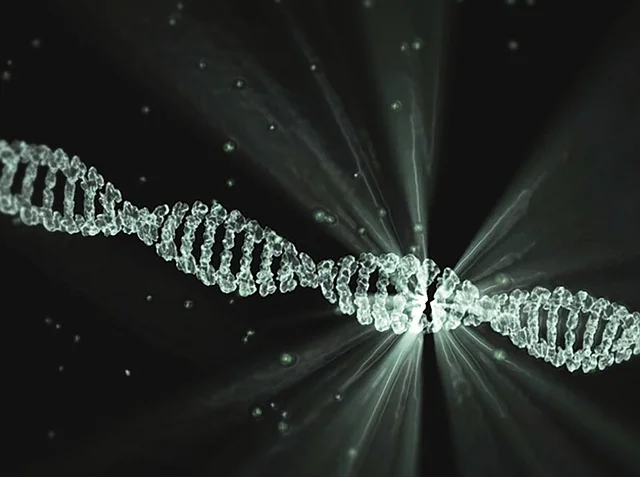
Source: foxtechview.com
Introduction
Within the context of molecular biology, DNA (deoxyribonucleic acid) and RNA (ribonucleic acid) cannot be done without since they are the molecules that contain, transfer and execute genetic information. They have a lot in common, but it is their structural and functional differences that make life to be complex. The main differences outlined in this article are clear with both traditional ideas and some not so well-known ones. DNA vs RNA
1. Backbone and Sugar Structural Composition.
DNA and RNA are basically chains of nucleotides (they contain a sugar, phosphate, and nitrogenous base). What sets them apart is:
Type of sugar: DNA has deoxyribose, a type of sugar that does not have a hydroxyl ( OH) group at the 2 position, and RNA has ribose, that has a complete hydroxyl group at 2. This appears to be a minor difference that makes RNA more chemically reactive and less stable.
Base composition: Both molecules contain adenine (A), guanine (G), and cytosine (C). Whereas, DNA has the fourth base as thymine (T), RNA has the fourth base as uracil (U) which does not have a methyl group as thymine.
Strandedness: DNA is nearly always in the form of two strands to create the classic double helix; RNA is typically single stranded, and can therefore fold itself into a variety of secondary and tertiary structures.
Due to the single-stranded nature of RNA it can undergo local intra-strand base pairing (hairpins, loops, etc.) and can thus have a large repertoire of three dimensional shapes and catalytic activity.
2. Stability and Longevity
Chemical stability: DNA lacks a 2 hydroxyl as opposed to RNA, which decreases the possibility of spontaneous cleavage in the sugar phosphate backbone. Besides this DNA base pairing and complementary base pairing protects the bases of DNA through the stacking of its bases in a double helix manner. When these properties are combined, DNA is much more stable at physiological conditions as well as alkaline conditions.
Vulnerability to degradation: RNA is more reactive and is more susceptible to hydrolysis (particularly at alkaline pH) and is easily broken down by ubiquitous ribonucleases (RNases).
Functional implication: DNA is a stable molecule (that can store information on a long-term basis, such as the genome), whereas RNA is a transient molecule (best in short-term tasks, such as message transportation, regulation, and catalysis).
3. Length, Localization & Abundance.
Length and size: DNA molecules (e.g., chromosomes) are very long, and in many cases, they contain millions and/or billions of base pairs. RNA molecules are generally significantly shorter of a few hundred to a few thousand bases.
Cellular location:
DNA is also predominantly located in the nucleus (in eukaryotes) although is also found in mitochondria or chloroplasts.
RNA is synthesized in the nucleus (through transcription), but is transported to the cytoplasm to perform its functions; a few remain in the nucleus (e.g. snRNA).
Abundance: A cell normally carries a single or small number of copies of its genomic DNA, but a large number of RNA molecules (particularly mRNAs) are made dynamically as required to be functional.
4. Function & Role of the Central Dogma.
The main direction of the flow of genetic information can be summarized as DNA → RNA → Protein Wikipedia+1 and this is the central dogma of molecular biology.
DNA: The Master plan. It contains hereditary information and is copied accurately during the cell division. It is a double stranded equipment; this means that one of the strands can be used as atemplate in either repair or cloning.
The roles they play in the implementation of that blueprint: RNA
- A gene transcript is handed over to the ribosome by the Messenger RNA (mRNA).
- Transfer RNA (tRNA) is the carrier of amino acids to the ribosome matching codons.
- The ribosome has a structural and catalytic core consisting of Ribosomal RNA (rRNA).
- Noncoding RNAs (miRNA, siRNA, lncRNA, etc.) that control the expression of other genes, process other RNAs, or are catalysts themselves are also present.
Transcription refers to the process in which DNA is utilized to produce RNA with the help of complementarity under the catalysis of RNA polymerases (which do not use primers, unlike DNA polymerases).
5. Base Pairing and Complementarity
- Complementary pairing: DNA In DNA adenine (A) is paired with thymine (T) by two hydrogen bonds, cytosine (C) with guanine (G) by three. RNA has A instead of thymine, and C instead of G, as a partner.
- Antiparallel strands: the two strands of DNA move in opposite directions (5 3 and 3 5). During transcription this antiparallel character is maintained in hybrid RNADNA interactions.
- Structural consequence: Base pairing combined with base stacking also provide more stability to the DNA helix as compared to the hydrogen bonding alone.
6. Darwinian & Practical Subtleties.
The catalytic capability of RNA: Due to structural plasticity, there are even catalytic RNA molecules (ribozymes) e.g. self-splicing introns or the peptidyl transfer function of ribosomal RNA. This favors theories of an early molecular basis of life in the form of the RNA world.
Interconversion: The DNA is synthesized to deoxyribonucleotides, demonstrating that RNA is probably the precursor to DNA in evolutionary change.
Exceptions & complexity:
Others (e.g. double-stranded RNA viruses) are based on the use of dsRNA genomes. ThoughtCo+2
It has structural diversity: e.g., DNA can be in the form of quadruplexes, branched, RNA can be in the form of circular RNAs (circRNAs).
7. Summary: A Comparative Table (at a Glance)
| Feature | DNA | RNA |
| Sugar | Deoxyribose | Ribose |
| Base | A, T, C, G | A, U, C, G |
| Strandedness | Double-stranded | Single-stranded (often) |
| Stability | High | Lower, more reactive |
| Main role | Long-term storage of genetic information | Messenger, regulator, catalyst |
| Location | Nucleus, mitochondria | Nucleus → Cytoplasm |
| Mode of synthesis | Self-replicating | Transcribed from DNA |
Closing Thoughts
Despite DNA and RNA having a similar base, structural modifications and functional differentiation cut vertical roles: DNA is the stable and stable store of hereditary information, and RNA is the versatile and dynamic implementer of such information. To achieve a deeper insight, beyond introductory texts, readers may delve into the regulatory functions of RNA (miRNAs, lncRNAs), the physics of transcription/translation, and the biochemical forces that contribute to stability (hydration, base stacking, electrostatics), and these can give additional competitive advantages.
I can also write a shorter summary or one that will suit a particular audience (e.g. medical readers, high school students). Would you like me to do that?
Read More Informative Article Visit This Site: FoxTechView
FAQs on DNA vs RNA
Q1: What’s the difference between RNA and DNA?
DNA is a stable, double-stranded molecule storing genetic information permanently. RNA is a single-stranded, less stable molecule that carries out short-term tasks like protein synthesis, regulation, and catalysis.
Q2: Why do humans use DNA instead of RNA?
DNA’s double-helix structure and chemical stability make it far better for long-term genetic storage. RNA, being less stable, would not preserve information across generations.
Q3: What is the main job of RNA?
RNA’s primary role is to translate genetic information into action—mainly by serving as the messenger (mRNA) and by directly participating in protein synthesis (tRNA and rRNA).
Q4: Why is RNA more important than DNA?
While DNA stores instructions, RNA executes them. Without RNA, DNA’s information would remain unused. In many viruses and in early evolution, RNA may even have been the primary genetic material.
Q5: DNA vs RNA function — what’s the difference?
- DNA: Stores and transmits hereditary information.
- RNA: Translates, regulates, and helps synthesize proteins from DNA’s instructions.
Q6: What are 10 differences between DNA and RNA?
- Sugar type (deoxyribose vs ribose)
- Bases (T vs U)
- Strandedness (double vs single)
- Stability (high vs low)
- Function (storage vs execution)
- Location (nucleus vs nucleus + cytoplasm)
- Size (longer vs shorter)
- Replication (self vs transcribed)
- Catalytic activity (none vs ribozymes)
- Longevity (lifelong vs temporary)
Q7: DNA vs RNA structure — how do they differ?
DNA forms a double helix with complementary base pairing, while RNA is usually single-stranded, folding into loops, stems, and other shapes.
Q8: What are 5 differences between DNA and RNA?
- Sugar backbone (deoxyribose vs ribose)
- Base composition (thymine vs uracil)
- Strandedness (double vs single)
- Stability (more vs less)
- Function (storage vs messenger/regulator)
Q9: What are the similarities between DNA and RNA?
Both are nucleic acids, made of nucleotides, have phosphate backbones, share bases A, C, and G, and are essential to genetic expression.
Q10: What is the full form of DNA and RNA?
- DNA: Deoxyribonucleic Acid
- RNA: Ribonucleic Acid
Q11: What are the types of RNA?
- mRNA (messenger RNA)
- tRNA (transfer RNA)
- rRNA (ribosomal RNA)
- Plus many others like miRNA, siRNA, lncRNA, which regulate or process gene expression.
Q12: What is RNA?
RNA is a nucleic acid that acts as the functional counterpart to DNA, carrying information, regulating processes, and participating directly in protein synthesis.







